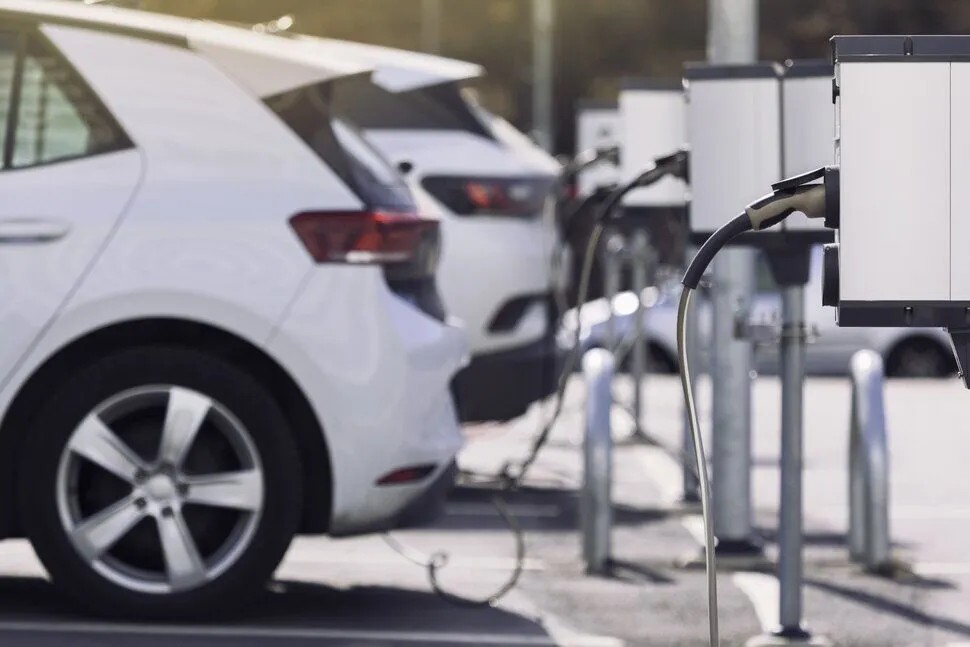Introduction
As a Professional China EV Charger Manufacturer, Topper Company Provides Reliable Electric Vehicle Charging Equipment and Comprehensive Charging Solutions.
As the electric vehicle (EV) market grows rapidly, the demand for efficient, versatile, and fast charging systems is greater than ever. Among the various charging technologies, the Combined Charging System (CCS) stands out due to its ability to provide both slow AC and ultra-fast DC charging through a single connector.
CCS is widely adopted in Europe and North America, offering a reliable, high-performance solution that caters to diverse EV user needs. In this article, we explore what CCS is, its types, benefits, limitations, compatibility, and how it compares with other charging standards — as well as its promising future role in EV infrastructure.
What is CCS (Combined Charging System)?
The Combined Charging System, or CCS, is a cutting-edge EV charging standard that integrates AC (alternating current) and DC (direct current) charging capabilities into a single connector. This dual functionality lets drivers easily switch between slower, longer charging sessions and ultra-fast top-ups depending on their needs.
CCS builds on the Type 2 AC connector commonly used in Europe by adding two extra DC power pins, enabling much higher voltage and faster charging speeds. This “combined” approach simplifies charging while maintaining compatibility with a wide range of EVs.
Types of CCS Chargers
- CCS Combo 1 (CCS1)
- Region: North America and Japan
- Design: Combines SAE J1772 AC connector with DC fast charging pins
- Use: Standard for EVs following SAE protocols in these markets
- CCS Combo 2 (CCS2)
- Region: Europe and other IEC-adopting regions
- Design: Combines Type 2 AC connector with DC fast charging pins
- Use: Standard in Europe, harmonizing AC and DC charging
Despite differences in AC connectors, both use the same DC fast-charging pins, ensuring global compatibility and streamlined infrastructure development.
Benefits of CCS Charging
- Ultra-Fast Charging: Supports up to 350 kW, enabling roughly 200 miles of range in 12 minutes — faster than Tesla’s current Superchargers.
- Wide Industry Adoption: Supported by many automakers such as Hyundai, Kia, Mercedes-Benz, Volvo, and Lucid, ensuring broad compatibility.
- Dual Charging Modes: Combines AC and DC in one connector, giving users flexible charging options.
- Plug-and-Charge: Allows seamless charging initiation without manual payment or authentication.
- Broad Geographic Coverage: Although Tesla’s Supercharger network has more ports, CCS chargers are more widely distributed globally.
Challenges and Limitations
- Complex Connector: The CCS plug is bulkier and more complex than simpler alternatives, which may affect ease of use.
- Variable User Experience: Charging speed and station performance can vary by provider and vehicle model.
- Slower AC Charging: While excellent at DC fast charging, AC charging speed is less optimized compared to dedicated AC chargers.
- Infrastructure Gaps: CCS networks remain uneven in rural or less-developed areas.
- Cost: High-power CCS chargers involve significant installation expenses, potentially raising user costs.
CCS Charger Compatibility
CCS is broadly compatible with a wide range of EV models, with automakers equipping vehicles with the appropriate CCS1 or CCS2 connector depending on the market. The system also supports backward compatibility with Type 2 AC plugs, allowing slower charging if necessary — a major plus for versatility.
The Future of CCS Charging
- Faster Speeds: Research aims to push beyond 350 kW, reducing charging times further.
- Wider Adoption: More automakers and charging networks are embracing CCS globally.
- Smart Grid Integration: CCS chargers will increasingly work with smart grids to optimize energy use and incorporate renewables.
- Improved UX: Software and hardware advancements will enhance reliability and user experience.
- Global Standardization: Efforts continue to make CCS the universal charging standard, simplifying infrastructure worldwide.
Conclusion
The Combined Charging System has become a cornerstone of modern EV charging infrastructure. By enabling both AC and DC charging with broad vehicle compatibility, CCS offers a flexible, high-performance charging solution that supports the global shift to sustainable transportation.
Though challenges like infrastructure disparities and costs persist, ongoing network expansion and technological innovation will strengthen CCS’s position as a central pillar of electric mobility for years to come.Know more about Google SEO Directory





Comments